Join us for Jell-O!
On Monday, Special Collections is holding a reception to celebrate the opening of a new online exhibit, Jell-O: America’s Most Famous Dessert, At Home Everywhere
Guest Curator Dr. Nicole Tarulevicz, Senior Lecturer in Asian Studies at the School of Humanities of the University of Tasmania will speak at 5pm on depictions of the exotic in early 20th century Jell-O advertising, including their use of imagined genealogies and a sanitized and infantilized depiction of a global food system.
The Jell-O company (actually various companies throughout the brand’s history) achieved its phenomenal success in part by being an early, enthusiastic, and prolific advertiser, creating and distributing an array of materials from the early 1900’s up to the present day. The Janice Bluestein Longone Culinary Archive has a range of advertising materials created and distributed by Jell-O to promote their signature product as well as some of its spin-offs like ice cream powder and pudding/pie-filling mix.
The JBLCA’s early 20th century Jell-O materials include booklets, pamphlets, brochures, inserts, and die-cuts, many of them colorfully and lavishly illustrated, some by noted contemporary artists such as Maxfield Parrish, Norman Rockwell, Angus MacDonnall, and Rose O'Neill, “mother” of the Kewpies.
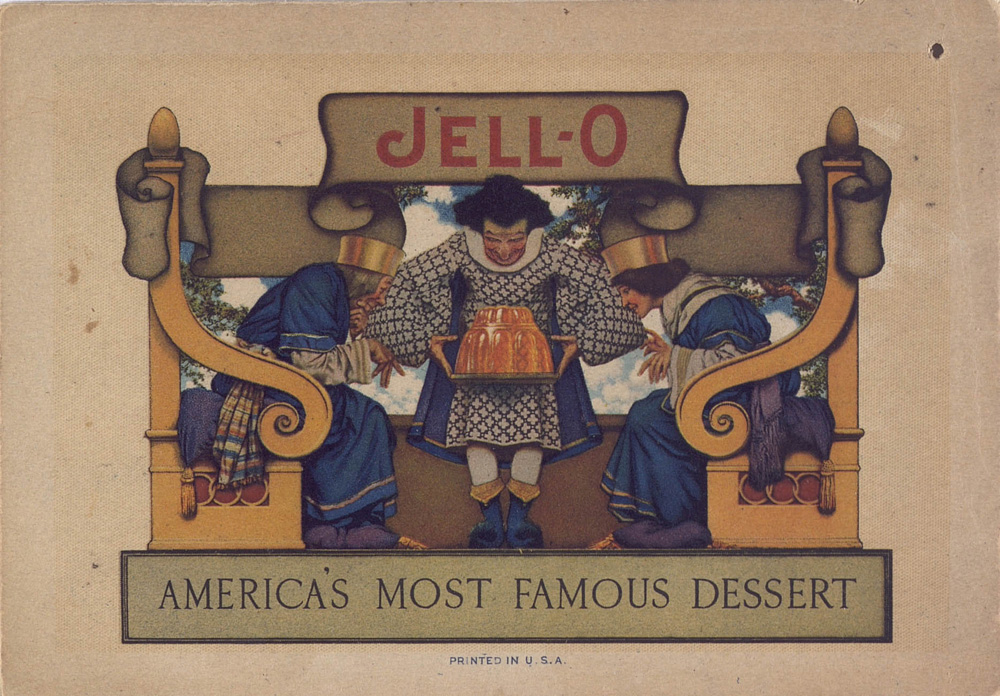
Maxfield Parrish “America’s Most Famous Dessert”
Polly put the kettle on, we'll all make Jell-O (1924); Back cover
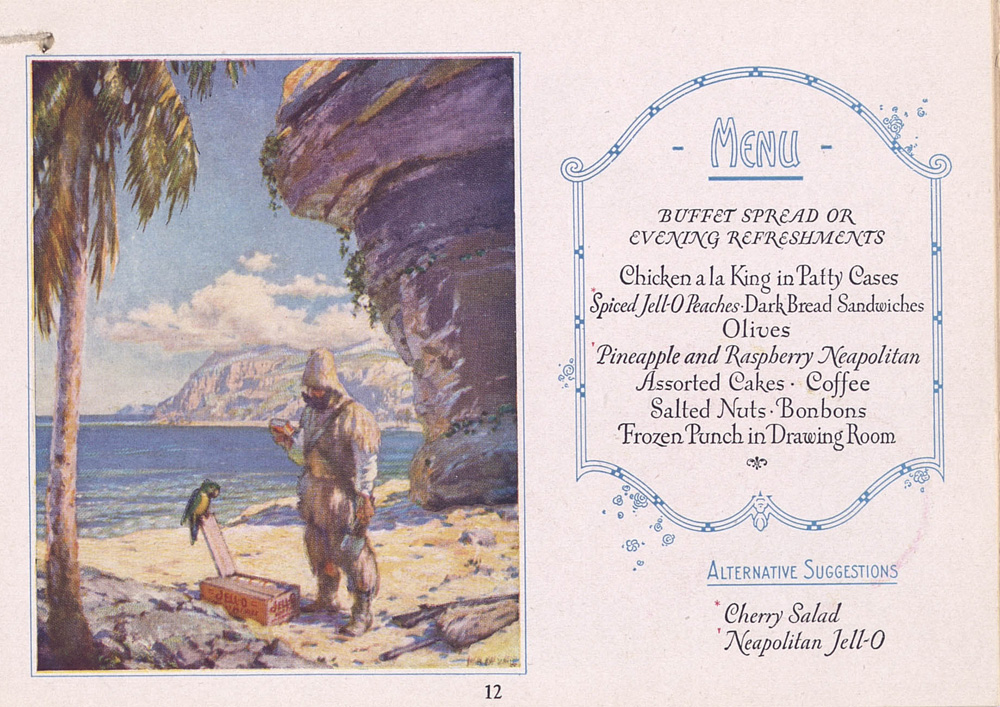
Angus MacDonnal “Jell-O Robinson Crusoe”
[Jell-O recipe book] (1925); p. 12
Taken altogether, these materials provide an overview of a very successful set of advertising practices, and a window into their social context. The materials show the rhetoric and imagery used to sell Jell-O, and the values the company drew on to entice & persuade consumers, especially convenience, modernity, a vision of “the good life”, and social aspiration. But more than that, the materials are a window onto the world in which they were created. They’re full of depictions, descriptions, images, stereotypes, and caricatures of age, gender, race, class, ethnicity, nationality, and regionality.
I sat down with Dr. Tarulevicz yesterday to ask her about what inspired the exhibit:
Q: I know the Jell-O ephemera spoke to you when I first showed them too you. Can you tell me about how they fit in with your research and your scholarly interests?
A: In some ways this is a side project for me but in other ways it actually connects quite directly to my work on Singapore, as surprising as that may seem. One of the things that caught my imagination initially was a specific image -- the map that showed where Jell-O sourced its ingredients. This is a historical example that anticipates and speaks directly to a contemporary situations - in this instance the global food system and the global supply-chain. We’re very familiar with this now, but it was ahead of its time in the 1920s.
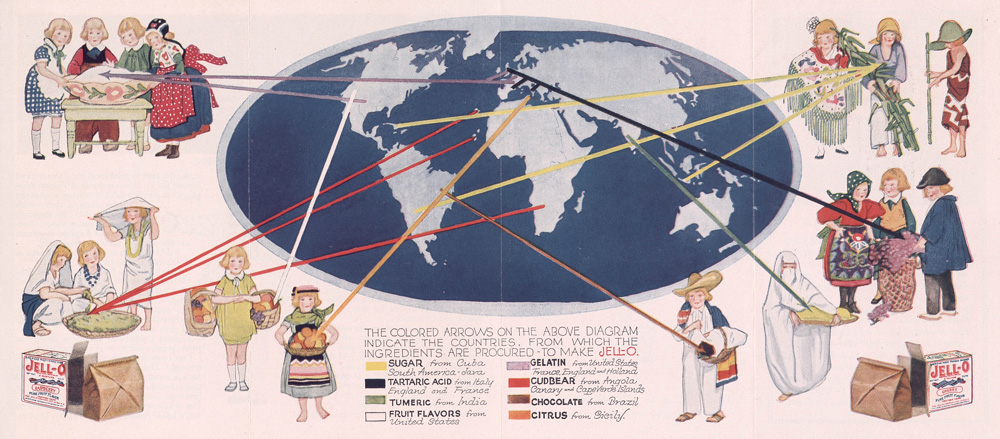
Map of the world cenetered on Jell-O factory in LeRoy, New York.
Miss Jell-O tells the what and how of America's most famous dessert (192-?); [verso]
With my work in Singapore on food safety it's a very similar situation: Singapore has never been self-sufficient in food and consequently has depended on the global pantry, and consequently, trust relationships have relied on the relationship between consumers and merchants rather than consumers and producers. And this is a situation that many people now find themselves in but this happened much earlier in Singapore than elsewhere, a historical example that anticipates a contemporary situation. So that's quite a similarity between Jell-O and Singapore
Also the period of the material in the exhibition, 1908-1928, is a historical moment in which food purity is incredibly important as an advertising strategy and the reason for that is issues in food quality, which is which is precisely what I'm looking at in Singapore.
The other reason I was drawn to this material is that they are lusciously illustrated images and it’s hard to resist looking at them - they have quite a captivating quality… But they are also filled with Orientalist and raced images and as an Asianist I was drawn to the depictions of a Chinese camp-cook wearing a queue, of scenes of Japanese tea parties, of Brahmin life in India and of large Buddha statues decorating tables.
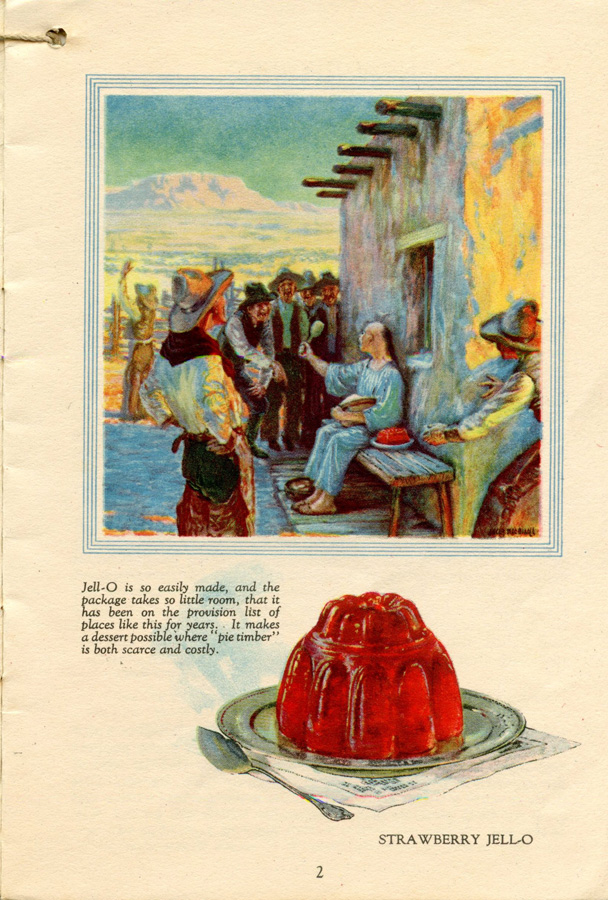
“At Home Everywhere - In the Cattle Country”
Jell-O, America's most famous dessert, at home everywhere (1922); p. 2
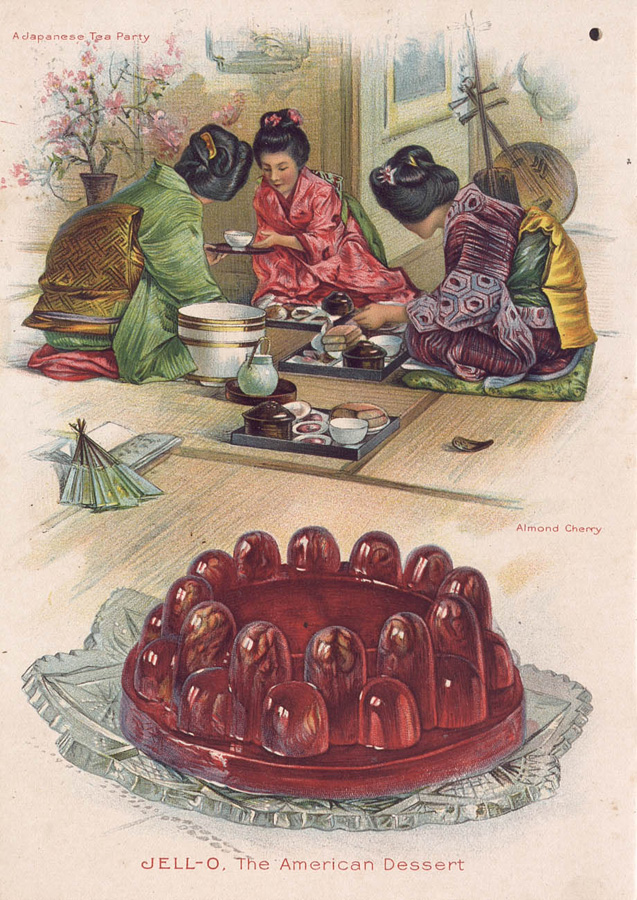
“Desserts of the World - A Japanese Tea Party”
Desserts of the world (1909); p. [14]
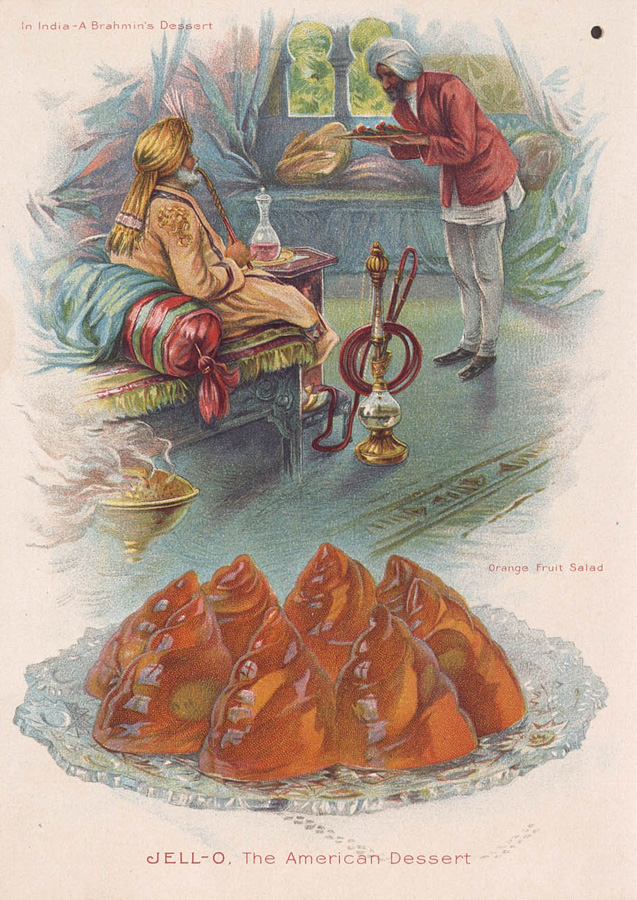
“Desserts of the World - In India a Brahmin’s Dessert”
Desserts of the world (1909); p. [18]
Q: One other thing that struck me was your use of the term “imaginary genealogy” - that really nailed it for me, exactly what the ads exploit. Can you say little more about that?
A: So at the time of these advertisements Jell-O is a relatively young company and I think one of the things it is looking to do is create a sense of tradition and age for the brand, to develop a suitable past, in Eric Hobsbawm's sense of a suitable past. That is, to invent a tradition for itself.
The company used fairy tale, folklore, and traditional stories as a way of of borrowing a suitable past and while that is certainly not unique to Jell-O, it is a way for the company to give itself an appearance of longevity and to locate it culturally.
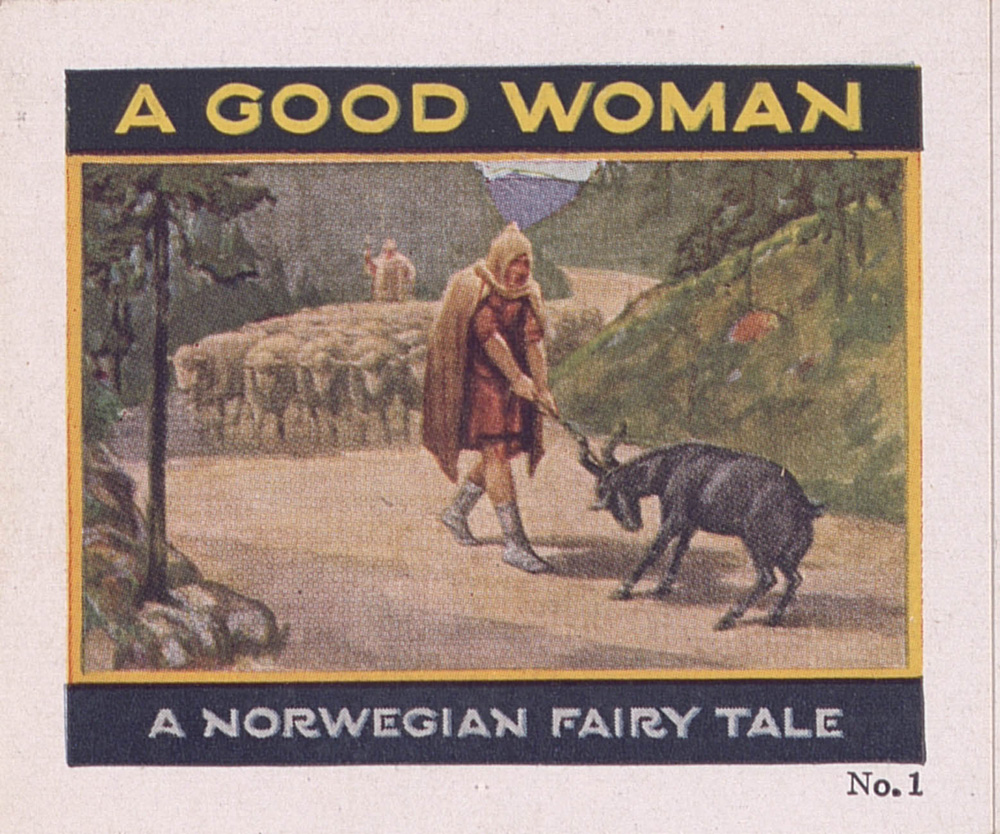
“A Good Woman: A Norwegian Fairy Tale”
A good woman: a Norwegian fairy tale, no. 1 [Jell-O Recipe Brochures] (1928); p. [1]
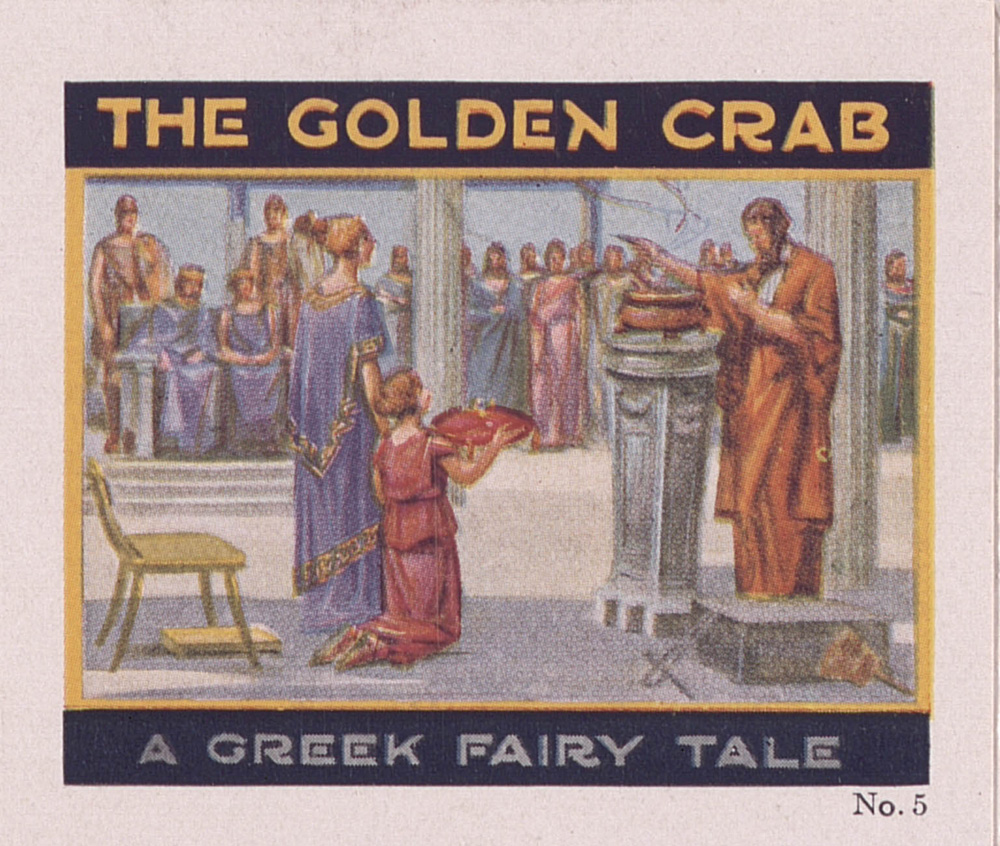
“The Golden Crab: A Greek Fairy Tale”
The golden crab: a Greek fairy tale, no. 5 [Jell-O Recipe Brochures] (1928); p. [1]
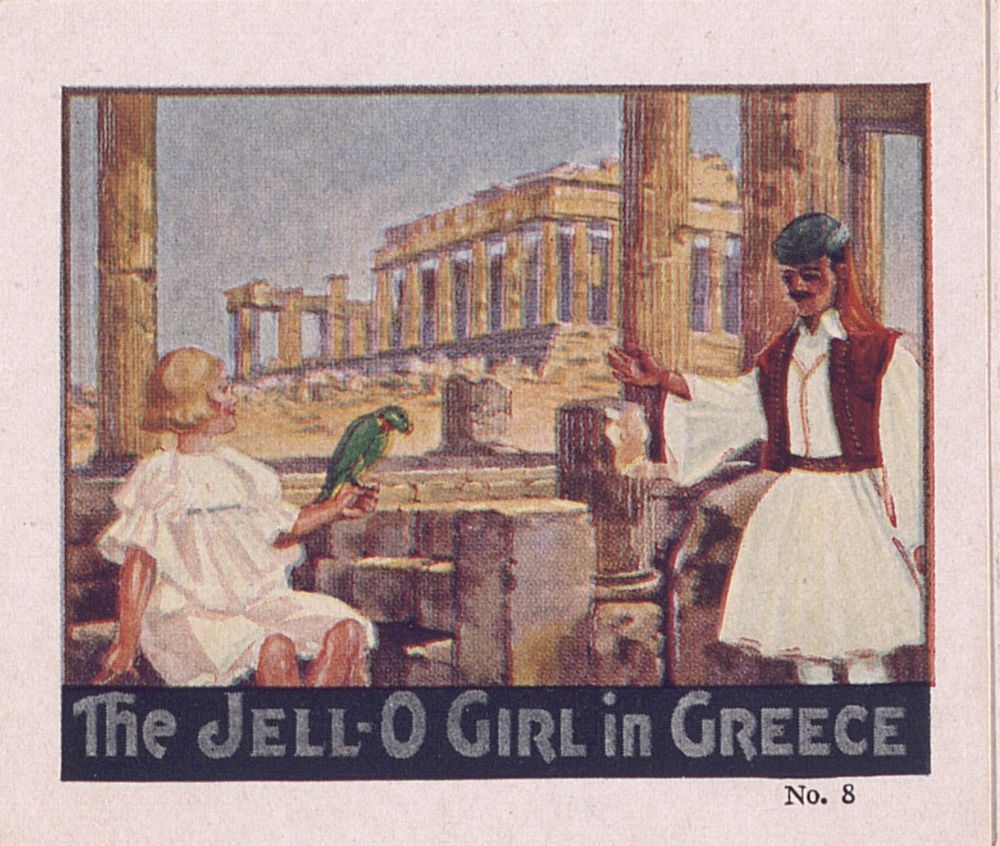
“The Jell-O Girl In Greece”
The Jell-O Girl in Greece, no. 1 [Jell-O Recipe Brochures] (1928); p. [1]
Reception and Lecture: Jell-O: America’s Most Famous Dessert, At Home Everywhere
January 12, 2015
4:30pm to 6:00pm
Hatcher Graduate Library, Gallery (Room 100)
Location Information
Lecture at 5pm
Jell-O will, of course, be served.
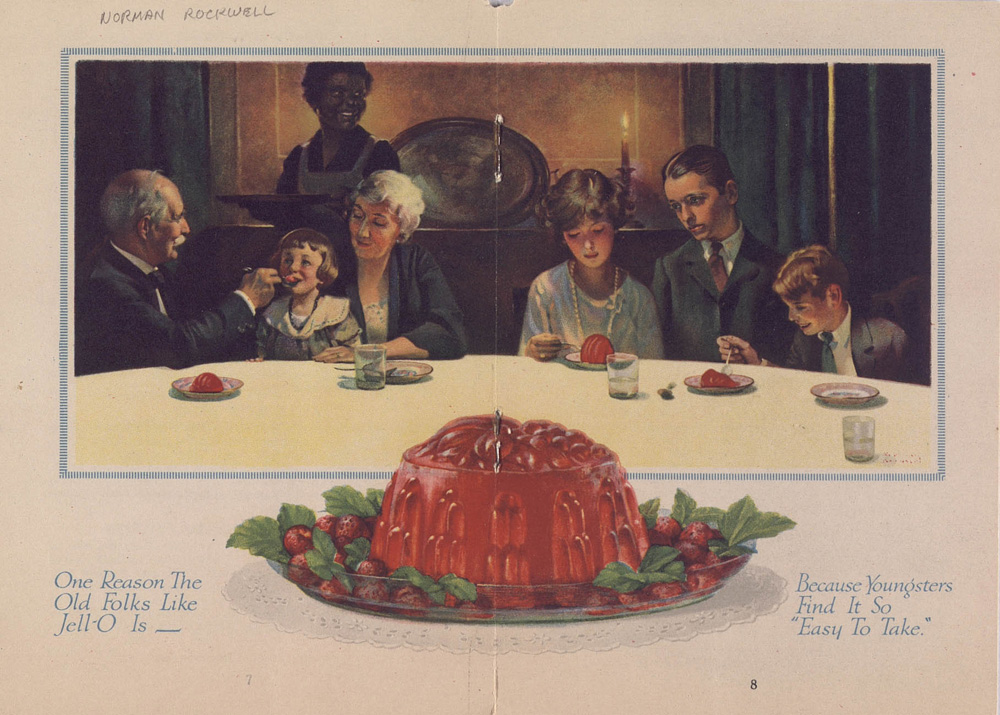
Norman Rockwell: ”One Reason the Old Folks Like Jell-O is — Because Youngsters Find it So ‘Easy to Take’”
"It's so simple" Jell-O, America's most famous dessert. 1922, pp 7-8